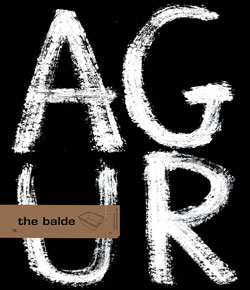agitprop train
Agitprop (агитпроп), agitation and propaganda.
Agitation and propaganda. Bringing these two words together, theorist George Plejanov created the concept of agitprop in the Bolshevik Russia. In the Soviet Union Lenin made the word his own and he set up an entire department with the specific objective to spread agitation and propaganda. Within the department, the single most special project was called the “agitprop train”. Many artists boarded the train and travelled the length and breadth on this massive new country. The tour featured plays and film recordings that highlighted the achievements and projects to be undertaken by the new government that were presented to people all over the country. The train carried its own small printing press and they would print up posters and leaflets that would then be thrown out of the window to people in the populated areas they passed through. Once the Revolutionary Government had established itself, the Department of Agitation and Propaganda began to focus more and more on propaganda and agitation was eventually sidelined. Agitprop had reached its last stop and there it stayed.
In the 20s and 30s, leaving the Soviet Union, ideologically left-wing political based theatre in the USA was baptised agitprop. Much of Bertolt Brecht’s work has also been labelled part of the agitprop movement. In the 80s, any theatre group or TV series that critised her ultraconservative policies was ridiculed as being agitprop by Margaret Thatcher. A couple of decades later, the situation has changed completely. Nowadays, agitation and propaganda are arms held and used by capital to control the economy in different countries. Of course, they are only used in the defence of the “irrefutable principles” of democracy and peace.
Agitation and propaganda. Bringing these two words together, theorist George Plejanov created the concept of agitprop in the Bolshevik Russia. In the Soviet Union Lenin made the word his own and he set up an entire department with the specific objective to spread agitation and propaganda. Within the department, the single most special project was called the “agitprop train”. Many artists boarded the train and travelled the length and breadth on this massive new country. The tour featured plays and film recordings that highlighted the achievements and projects to be undertaken by the new government that were presented to people all over the country. The train carried its own small printing press and they would print up posters and leaflets that would then be thrown out of the window to people in the populated areas they passed through. Once the Revolutionary Government had established itself, the Department of Agitation and Propaganda began to focus more and more on propaganda and agitation was eventually sidelined. Agitprop had reached its last stop and there it stayed.
In the 20s and 30s, leaving the Soviet Union, ideologically left-wing political based theatre in the USA was baptised agitprop. Much of Bertolt Brecht’s work has also been labelled part of the agitprop movement. In the 80s, any theatre group or TV series that critised her ultraconservative policies was ridiculed as being agitprop by Margaret Thatcher. A couple of decades later, the situation has changed completely. Nowadays, agitation and propaganda are arms held and used by capital to control the economy in different countries. Of course, they are only used in the defence of the “irrefutable principles” of democracy and peace.



